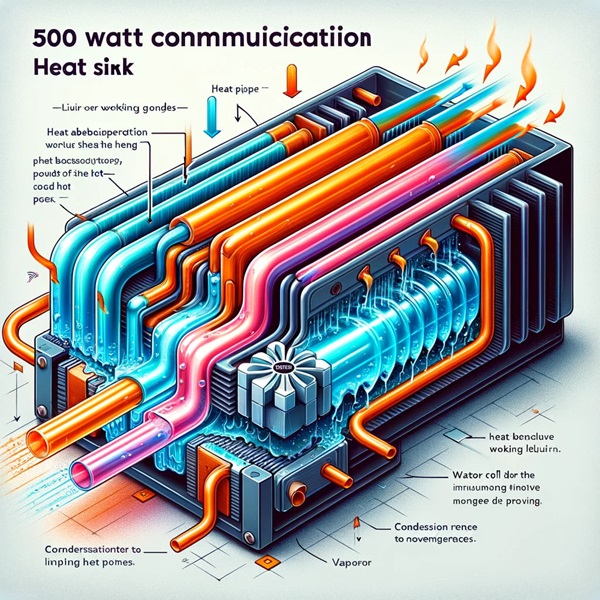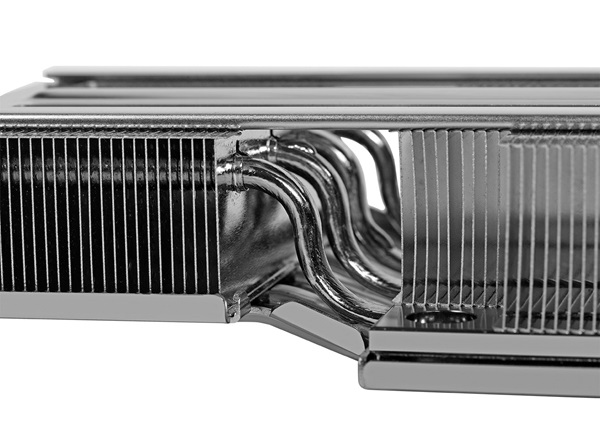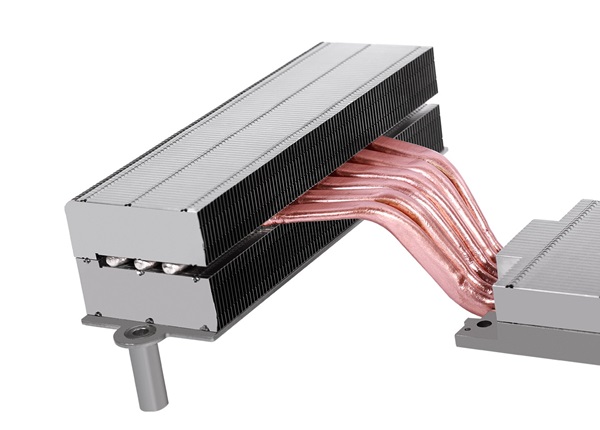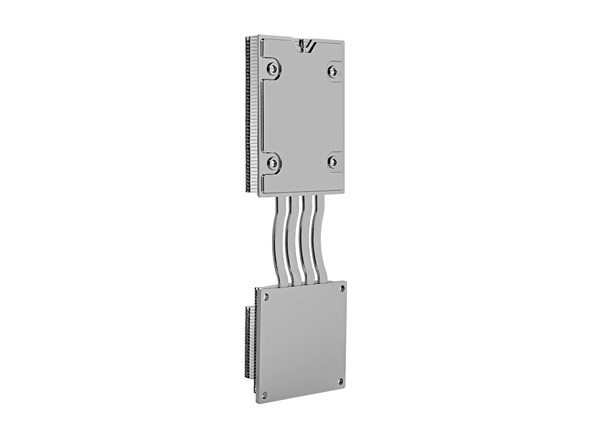Heat pipe cooling systems have become integral to managing heat in modern electronics. From aerospace to consumer electronics, their passive efficiency makes them a preferred thermal solution. However, despite their widespread use, many engineers and procurement professionals still hold misconceptions about their function, design constraints, and reliability.
These myths often lead to overengineering, unnecessary cost, or outright dismissal of an effective solution. The following guide addresses seven of the most common misunderstandings about heat pipe cooling systems and explains the reality behind each.

At a glance, it's easy to imagine a sealed pipe filled with fluid as a risk. The fear is that if punctured, it might leak and damage nearby electronics. But that's not how modern heat pipes behave in real-world applications.
Firstly, the working fluid inside a heat pipe is present in a very small quantity—typically just enough to saturate the wick structure. Even if the outer shell is compromised, the liquid is absorbed and doesn't drip or spill. It's not a reservoir; it's a closed loop system with capillary action constantly cycling vapor and liquid within the wick.
Moreover, heat pipes are constructed with durable metals like copper or stainless steel. Their structure is highly resistant to shock, pressure, and vibration. In standard use, the risk of rupture is virtually nonexistent unless the device is subjected to extreme mechanical damage.
The manufacturing process further reduces risk. During assembly, heat pipes are vacuum sealed, minimizing internal pressure and ensuring that any breach won't result in a high-pressure spray. It's far more likely that a heat pipe fails thermally—by losing capacity due to dry-out or wick damage—than mechanically.
Copper isn't light, so the assumption is understandable. Designers often hesitate when working with weight-sensitive systems like UAVs, handhelds, or medical wearables. But this assumption overlooks the way heat pipes are used.
While heat pipes are made of metal, they're hollow and contain very thin walls. Their total mass is often far less than the solid heat spreaders or dense heat sinks they replace. A copper heat pipe may only add a few grams while distributing heat more effectively over a larger surface.
In many applications, using heat pipes enables the elimination of heavier elements—like thick copper blocks, multiple fans, or bulky extrusions. By efficiently relocating heat to areas with better airflow or more space, heat pipes enable the use of lighter aluminum components or smaller enclosures.
For example, in smartphones and tablets, vapor chambers and flattened heat pipes are now standard. Their structural efficiency and low weight have made them essential in balancing thermal load with minimal thickness.
This trade-off becomes even more favorable when you factor in performance. Less weight with better thermal performance isn't a compromise—it's an upgrade.
This is one of the most persistent misunderstandings. People often visualize a heat pipe working like a one-way tube—hot on one end, cold on the other. While many thermal solutions do arrange pipes this way, it's not a design limitation.
Heat travels within the pipe from any warmer area to any cooler one. The wick and fluid inside span the full length, enabling multidirectional flow. As long as there's a thermal gradient, the pipe transfers heat.
In practice, this means heat pipes can absorb heat anywhere along their body and release it wherever the temperature is lower. This flexibility lets designers spread, transport, or even store heat in complex arrangements.
You'll find examples where heat pipes are bent into loops or embedded into heat sinks as planar elements. In such cases, the pipe isn't just transferring heat from point A to B—it's spreading it laterally across a surface or structure. This dramatically improves thermal uniformity.
Orientation isn't a barrier either. Modern heat pipes, particularly those with sintered or grooved wicks, work in almost any physical orientation—even vertically against gravity—because capillary forces drive the return of condensed fluid.

Vapor chambers are great at spreading heat in two dimensions. However, they're not the only option. Well-designed heat pipe assemblies can achieve similar planar performance, especially when multiple pipes are embedded and shaped to fit a flat or contoured base.
Bending a heat pipe doesn't ruin its functionality. Engineers regularly design custom curves, U-bends, or flattened sections into heat pipes to ensure optimal contact and coverage. This allows heat pipes to behave similarly to vapor chambers while offering greater mechanical durability and lower manufacturing costs.
In compact systems, this matters. Vapor chambers can be delicate—particularly in applications requiring pressure during assembly. Heat pipes offer structural strength and flexibility, making them easier to handle and integrate into rugged environments.
Also, when embedded into aluminum bases or stacked in arrays, heat pipes distribute heat effectively enough to replace vapor chambers in most non-ultrathin applications. The decision isn't always about performance—it's about matching geometry, strength, and cost to system constraints.
The idea that heat pipes require boiling temperatures is rooted in misunderstanding. It's true that they operate via phase change—liquid to vapor and back—but that doesn't mean the fluid inside must boil at 100°C.
The internal pressure in a sealed heat pipe is lower than atmospheric. This changes the boiling point of the working fluid. For example, water inside a heat pipe may vaporize at 30–40°C depending on the vacuum level. This makes heat pipes viable even in applications with modest temperature rises.
As long as there's a temperature difference between one end and the other, the heat pipe will function. The efficiency may vary depending on the thermal gradient, but heat pipes don't need extreme temperatures to begin working.
This low activation threshold is precisely what makes them attractive in fanless systems, energy-efficient designs, and passive cooling applications. Small deltas—5°C or less—can still support useful heat transfer.

Another common concern is freezing of the internal fluid. While water-based heat pipes do freeze below 0°C, that doesn't make them useless.
First, freezing doesn't damage the pipe itself. The working fluid is allowed to expand slightly during solidification, and most designs tolerate repeated freeze-thaw cycles without rupture or degradation.
Second, alternative fluids like ammonia, methanol, or acetone extend the functional range well below -60°C. These fluids are chosen based on target environment, component materials, and safety constraints.
Additionally, in applications like telecom or aerospace, heat pipes can be designed with integrated startup mechanisms or hybrid heating systems to ensure thermal activity even in sub-zero conditions.
In fact, many heat pipes used in satellites or high-altitude drones are optimized specifically for harsh temperature swings and vacuum exposure. With the right fluid-metal combination, they operate in some of the most extreme thermal environments imaginable.
While heat pipes may have higher unit cost than simple metal components, they often reduce the overall cost of the cooling solution.
By improving heat transfer, they allow smaller, cheaper fans or the use of aluminum instead of copper. They reduce the need for overbuilt enclosures, reduce thermal-induced failures, and improve energy efficiency by minimizing overheating.
In some cases, using a heat pipe avoids the need for active cooling entirely. That means no moving parts, no noise, and far fewer maintenance concerns.
Additionally, their long lifespan—often 10–20 years—means less downtime and fewer replacements. When viewed as part of a system rather than as an individual component, heat pipes deliver excellent ROI across almost every metric.
Heat pipes are not just thermal bridges—they're design enablers. Their real value lies in how they unlock efficiency, shrink system size, reduce complexity, and increase performance margins.
They function passively, consume no power, and operate silently. Their effective thermal conductivity surpasses solid metals by 10x to 200x, depending on design. This translates into not only faster heat removal but also more uniform temperature distribution, which is essential for safety and long-term reliability.
Whether embedded in a heat sink, flattened for use in mobile devices, or coiled around sensitive electronics, heat pipes enable designers to build thinner, quieter, cooler systems with fewer trade-offs.

Not all heat pipes are the same. Manufacturers offer a wide range of custom configurations to suit different needs.
This adaptability means heat pipes aren't a fixed solution—they're a toolkit. And when combined with precise thermal modeling, they can be integrated seamlessly into new designs or retrofits without costly redesigns.
Heat pipe cooling systems are frequently underestimated due to outdated or oversimplified assumptions. But as device complexity rises and thermal budgets shrink, design flexibility and performance reliability matter more than ever. Many of the perceived limitations of heat pipes have long been overcome through advanced engineering and manufacturing.
If you're developing a compact or high-performance electronic system, reconsidering heat pipe integration may reveal design opportunities you hadn't considered. For tailored support and engineering solutions, feel free to contact us at [email protected].
By continuing to use the site you agree to our privacy policy Terms and Conditions.